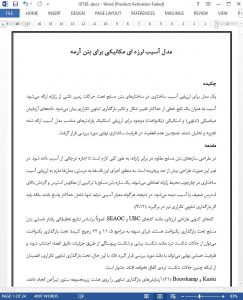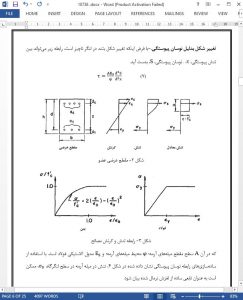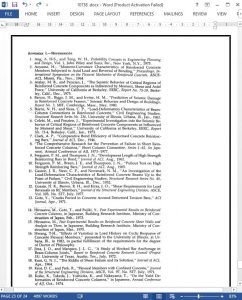ABSTRACT
A model for evaluating structural damage in reinforced concrete structures under earthquake ground motions is proposed. Damage is expressed as a linear function of the maximum deformation and the effect of repeated cyclic loading. Available static (monotonic) and dynamic (cyclic) test data were analyzed to evaluate the statistics of the appropriate parameters of the proposed damage model. The uncertainty in the ultimate structural capacity was also examined.
INTRODUCTION
In earthquake-resistant design of reinforced concrete structures, it is generally necessary to permit some degree of damage; otherwise the design would be too costly. In order to implement this philosophy properly, models for assessing structural damage within the context of a random earthquake environment are required. A reinforced concrete structure is weakened or damaged by a combination of stress reversals and high stress excursion. Consequently, any damage criterion should include not only the maximum response, but also the effect of repeated cyclic loadings (4,12). Current seismic design codes, such as the UBC and SEAOC codes, are based primarily on research results of flexural behavior of reinforced concrete under monotonic loadings (e.g., Refs. 5, 11, and 23). Under monotonic loadings, brittle failure modes such as shear and bond failures can be avoided through careful detailing of the members, and the ultimate flexural capacity can be accurately evaluated (5). However, under repeated cyclic loadings, it is difficult to ensure that such brittle failure modes will not occur.
SUMMARY AND CONCLUSIONS
A seismic damage model for reinforced concrete members is proposed. The model is based on the premise that the total damage from earthquake motions is composed of the damage caused by the maximum structural deformation and the absorbed hysteretic energy. Damage is measured in terms of an index, D, with values D s 1.0 representing total collapse. Available monotonic and cyclic test data were analyzed to evaluate the statistics of the appropriate parameters of the proposed damage model. The lognormal distribution was determined to be appropriate for the damage index of reinforced concrete components. Values of the damage index should be calibrated with observed seismic damage of structures; this calibration is described in Ref. 29.











